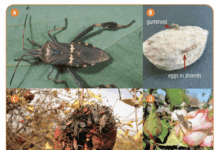
Improving grower returns for almonds comes down to a simply supply and demand equation. While there is no easy way for the supply side to figure itself out, the industry is looking at ways to boost the demand side for high quality, healthy, sustainably grown almonds, opening up new international markets and reducing trade barriers that can hinder that demand.
Boosting Global Demand
The Almond industry has identified 10 markets around the globe that it is working to boost demand for California almonds. Capitalizing on a stewardship and consumer health story that continues to provide promotable benefits, the Almond Board of California is targeting these messages to cut through the chatter and boost global consumption. ABC has unveiled new campaigns in India, Germany and Mexico to help grow global demand and is investing in Project Thea to reevaluate its global marketing programs and uncover additional international opportunities.
“We are talking about new markets and new and different ways to bring information about almonds to consumers,” Emily Fleishman, Almond Board of California’s VP of Global Marketing, told an Almond Conference audience.
There is plenty of good news to share as part of this global marketing effort. Research in the past year suggests that almonds can be a healthy addition to a weight loss diet and could help improve prediabetic blood sugars. Another new study on almonds and exercise recovery has formed the basis of a “Prime” advertising campaign featuring Deion Sanders. Fleishman that the Prime campaign appears to be paying off with regained sales among Gen Z consumers and she hoped it and other targeted efforts cumulatively would help reverse recent sales declines among Gen Z and Boomer generation consumers.
And with CEOs of major global corporations stating that sustainability within the next two decades will be fully baked into their business plans, almonds are well positioned with CASP data to integrate into that business plan with messaging about almond growers’ environmental stewardship practices.
The California Almond Sustainability (now Stewardship) Program over the past two decades has built a strong stewardship story, said ABC’s Danielle Veenstra, senior manager of global stewardship and management. About 1 million acres of almond orchards have the right type of soil for groundwater recharge, and as more growers adapt their practices to recharge groundwater aquifers they are well positioned to be part of the groundwater solution. Similarly, with whole orchard recycling becoming more commonplace in California almond orchards, those orchards are positioned to be part of a climate smart future. Whole orchard recycling allows trees to store significant amounts of carbon in the soil. In addition, Veenstra said, almonds have a very low carbon footprint for a protein source and the industry continues to work to make it a zero-waste product.
With so many good stories to tell, the challenge before the industry is how to cut through the noise and chatter and get that message through to consumers and retail and industrial buyers.
Influencers are helping to tell the story through social media channels and targeted advertising is also getting the message out. At the same time, Fleishman said key markets such as India are exploding with new products beyond just eating almonds out of hand. Shipments to India have tripled in recent years moving it from the third largest to the No. 1 export market. With shipments in 2022 of 331 million pounds, that potential is just beginning to be fully tapped.
Removing Trade Barriers
On the trade side, panelists at another Almond Conference session said one of the quickest ways to instantly boost grower returns is to remove trade barriers that impact international channels for California almonds. Panelists said collaborative solutions to trade barriers throughout the supply chain that include direct tariffs, add-on taxes and fees, and technical issues often more grounded in politics than science, could find their way to direct returns to growers.
Jonathan Hoff with Monte Vista Farming said reducing tariffs would significantly improve grower prices.
“I’m not talking about 5 or 6 cents, that’s more like 80 cents. So, if you’re getting a buck fifty we’re talking about $2.30. It’s a material difference,” he said.
Retaliatory tariffs in China and Turkey are limiting access to those markets and dealing with them as a priority would quickly improve pricing. He said the playing field for other nations of origin, including Australia, Spain and Portugal must also be leveled going forward.
Timothy Harrison, of Intersnack, one of the largest buyers of tree nuts with several highly recognizable brands in the EU, said the industry also needs to find a way to push almonds into the market to close the disparity between falling grower prices and firm retail prices in international markets.
“There is a gap in what growers are getting at wholesale and what consumers are paying,” Harrison said. “We need to present the consumer with a price that is going to get product moving and work with retailers on what types of promotions we can be doing to get that done.”
At the same time, the almond industry needs to focus more of its attention on building new markets. Instead of focusing on China, Harrison noted there are several other Asian markets that are relatively untapped. Similarly, instead of working through Germany and other major EU countries to help remove trade barriers to the EU, find other countries such as Netherlands who purchase almonds but might be more open to hearing the message about stewardship and California almonds.
“Netherlands uses a huge of amount of nuts,” Harrison said. “Those kinds of countries can be a conduit for going into the EU and you will find a more welcome reception than in other countries like Germany, yet they still have an equal voice in the EU.”











